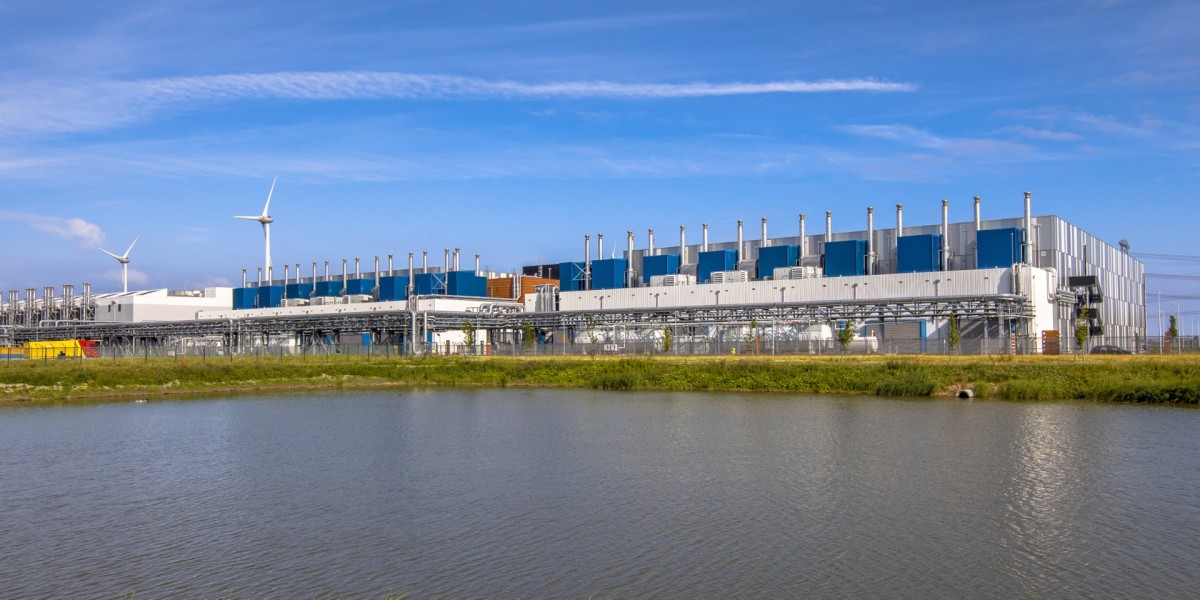As digital infrastructure continues to expand rapidly to support the demands of cloud computing, artificial intelligence, and data-driven services, data centres are becoming one of the largest consumers of electricity globally. This rise in energy consumption presents significant challenges, not only to the bottom line of data centre operators but also to the environment.
Data centres and data transmission networks account for approximately 1–1.5% of global electricity consumption and contribute around 0.5% of CO₂ emissions. These figures rival the environmental impact of entire sectors like aviation and chemicals. In fact, forecasts suggest that energy demand from data centres could surge by 160% by 2030, accounting for as much as 3–4% of the world’s electricity consumption.
Cooling systems play a central role in this consumption. Roughly 40% of a data centre’s energy use is for maintaining optimal temperatures for sensitive electronic equipment, thereby preventing overheating and potential equipment failure. But as AI capabilities continue to scale, the challenge of maintaining efficient cooling processes has become increasingly demanding. Given that most data centres spend 50% of their operating expenses on energy bills, improving the energy efficiency of cooling infrastructure has become both an environmental imperative and a business priority.
The role of high-efficiency motors and variable speed drives
One of the most significant ways to enhance energy efficiency in data centre cooling systems is by updating their core mechanical components: motors and drives. Traditional motors often operate in line with outdated efficiency standards and are unable to respond dynamically to changing cooling requirements. These fixed-speed systems consume more electricity than necessary, especially during periods of low demand, and therefore result in higher energy costs.
Instead, modern high-efficiency motors – such as those conforming to IE4 and IE5 standards – reduce electrical losses significantly through their high efficiency and by optimising mechanical performance. When installed in place of legacy motors, they can yield up to 10% energy savings, providing rapid return on investment given the high-power loads typical of data centres.
The energy-saving potential is multiplied when these motors are paired with variable speed drives (VSDs). Unlike fixed-speed motors, VSDs allow precise control over motor speed based on real-time cooling needs. During times of lower demand, motors can operate at reduced speeds, thereby reducing energy use without compromising performance. In fact, combining VSDs with high-efficiency motors can reduce energy
consumption for cooling by 30–50%, all while maintaining stable temperatures across servers.
Moreover, VSDs contribute to operational longevity. By preventing motors from constantly running at full capacity, they minimise mechanical wear and extend the service life of critical components. This also reduces maintenance needs and downtime, which are important for operators focused on reliability and cost control.
Cleaner power with ultra-low harmonic drives
While high-efficiency motors and VSDs can help improve operational inefficiencies, large data centres also often face complications as a result of harmonics – distortions in electrical power – which can cause overheating and even equipment failure.
Ultra-low harmonic (ULH) drives are specifically designed to address these power quality issues. By minimising harmonic distortion, ULH drives help ensure stable power delivery. This enhances the efficiency and reliability of cooling systems while protecting the centre’s wider electrical infrastructure. By improving power quality, ULH drives also help to reduce the likelihood of disruptions to sensitive IT operations, further safeguarding uptime and reliability.
Given that data centres rarely operate at full capacity 24/7, one of the major advantages of ULH drives is their ability to provide superior efficiency during partial load conditions. These drives maintain efficiency even when the cooling load is not at its peak, adapting to real-time demand. This allows data centres to optimise their power consumption during off-peak hours and helps reduce strain on cooling infrastructure.
Additionally, ULH drives are built with modularity in mind. Their design allows for easy installation, upgrades, and servicing, making them a flexible solution for facilities aiming to future-proof their infrastructure. As data centre demands continue to increase, ULH drives can be adapted without major system overhauls, keeping capital and operational expenditures under control.
Adaptability with modular cooling systems
Data centres can also improve their energy efficiency by adopting modular cooling systems, which offer a strategic advantage in scalability, efficiency, and sustainability. Unlike traditional cooling systems that require comprehensive redesigns to accommodate new loads or technologies, modular systems are built for adaptability.
This approach allows data centre operators to upgrade individual components, such as motors, drives, or heat exchangers, without replacing the entire cooling setup. As newer, more energy-efficient models become available, they can be integrated seamlessly. This incremental upgrade strategy not only helps manage costs but also supports long-term environmental goals by extending system lifespans and reducing waste.
Modular systems also align well with circular economy principles. Components can be recycled, reused, or repurposed, contributing to a reduction in environmental impact. Maintenance becomes simpler and faster, reducing the risk of unplanned downtime and enhancing operational resilience.
The financial benefits of energy-efficient cooling
While the environmental benefits of energy-efficient cooling are compelling, the financial incentives are just as strong. By reducing electricity consumption, data centre operators can achieve substantial cost savings on energy bills. For large-scale data centres with heavy cooling demands, even a modest improvement in efficiency can result in substantial annual savings.
There are also growing policy and regulatory incentives for implementing high-efficiency technologies. Many governments offer tax breaks, rebates, or other financial support for adopting low-carbon solutions. These incentives can accelerate return on investment and further improve the financial viability of green upgrades.
For instance, speaking at an event hosted by conglomerate J. Safra in Sao Paulo, Brazilian Finance Minister Fernando Haddad said Brazil could leverage its clean energy potential to attract investment and build data centres by exempting the related technology investments from federal taxes, which would help boost capital inflows.
As the digital economy expands, data centres will continue to grow in number, size, and complexity. Ensuring that this growth is sustainable and reliable hinges on optimising key cooling infrastructure systems, of which high-efficiency motors, variable speed drives, and ultra-low harmonic drives can provide immediate and measurable benefits. When integrated into modular, futureproof cooling systems, they offer a powerful toolkit for reducing energy use, lowering costs, and minimising environmental impact.
In the years ahead, energy-efficient cooling will be more than just a technical upgrade—it will be a foundational element in ensuring the reliability, profitability, and sustainability of the global data economy, even in the harshest environments.





